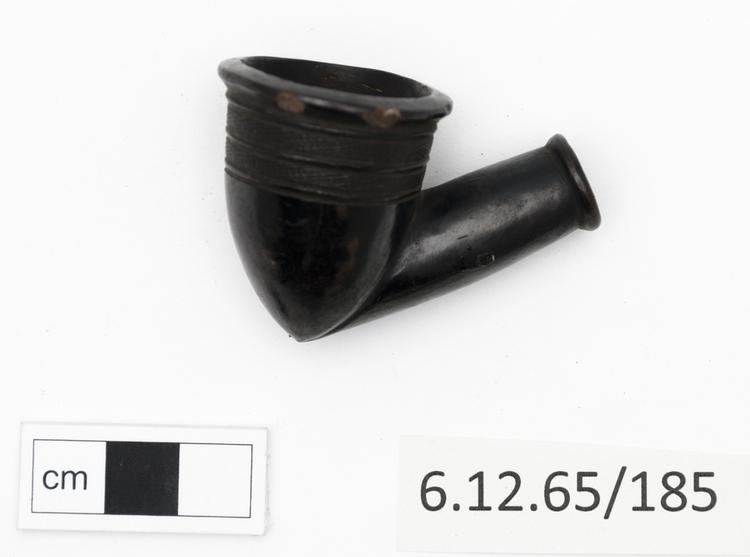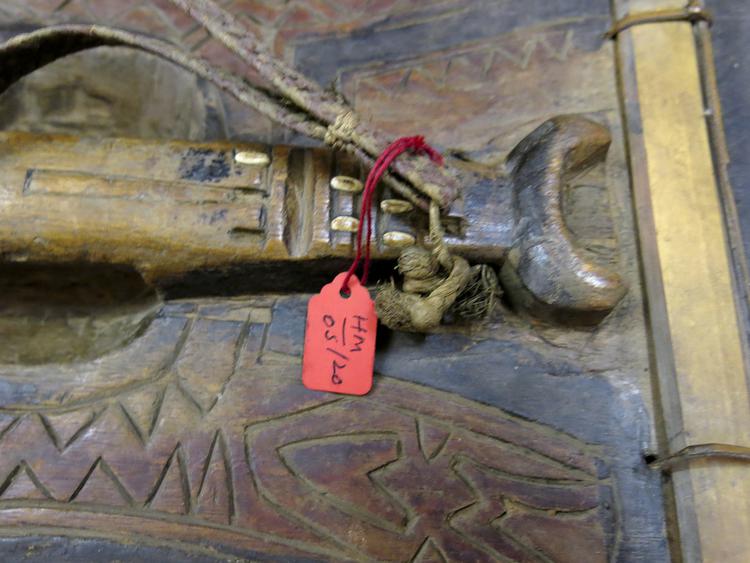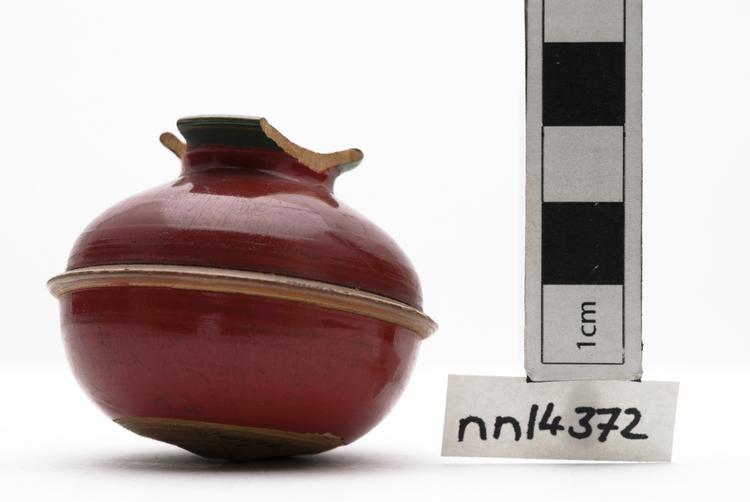
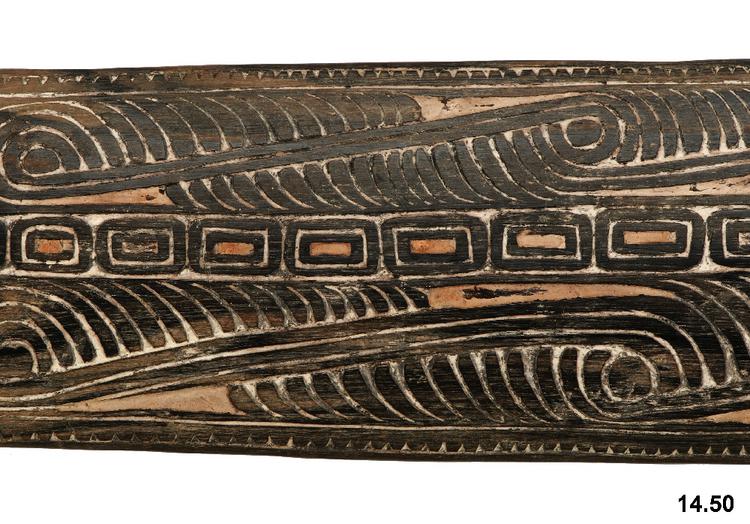
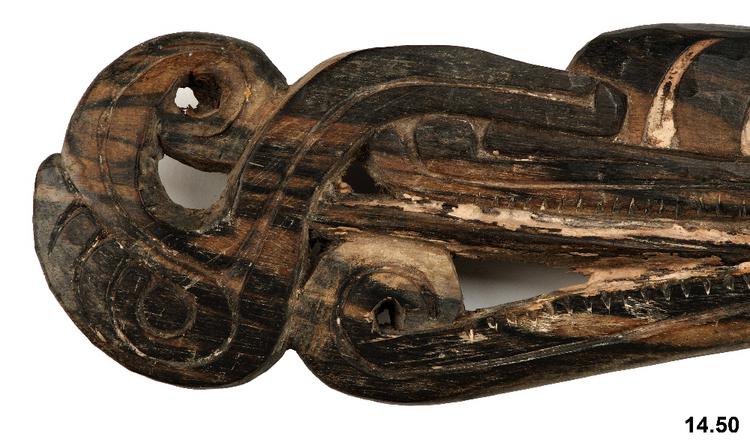
Wooden sword club, with bird, crocodile, scroll and concentric square carvings with an elaborate pommel.
Sword-Club, Puluta, Trobriand Islands, Massim, Papua New Guinea. Although found in various forms throughout the Massim region of Papua New Guinea, sword-clubs were never used in formally arranged battles within long-term military campaigns. Instead, they were carried by Massim men as weapons for everyday protection in skirmishes and brawls, which usually led to the development of all-out war. An early anthropologist of Trobriand Islands culture, Bronislaw Malinowski reckoned that most Trobriand Island conflicts arose over garden boundaries, the damage caused by pigs, the fidelity of women, poor mannners and suspicions of witchcraft. Perhaps the most remarkable feature of the Massim sword-clubs is their intricate and elaborate engraving, which reflects their role as ceremonial weapons for displaying a warrior’s military splendour; men brought out and displayed their sword-clubs prominently at major social gatherings, festivals and dances, and the club’s impressiveness was viewed as a reflection on the man. Wood. Late 19th Century. Formerly in the private collection of Commodore James Elphinstone Erskine, the Scottish naval officer who proclaimed a British Protectorate over south-eastern New Guinea in 1884; as he returned to Britain in 1885, it is likely that this object was acquired by him during that time. Purchased by the Horniman Museum alongside other Erskine items at Stevens Auction Rooms, 1914.
fighting



